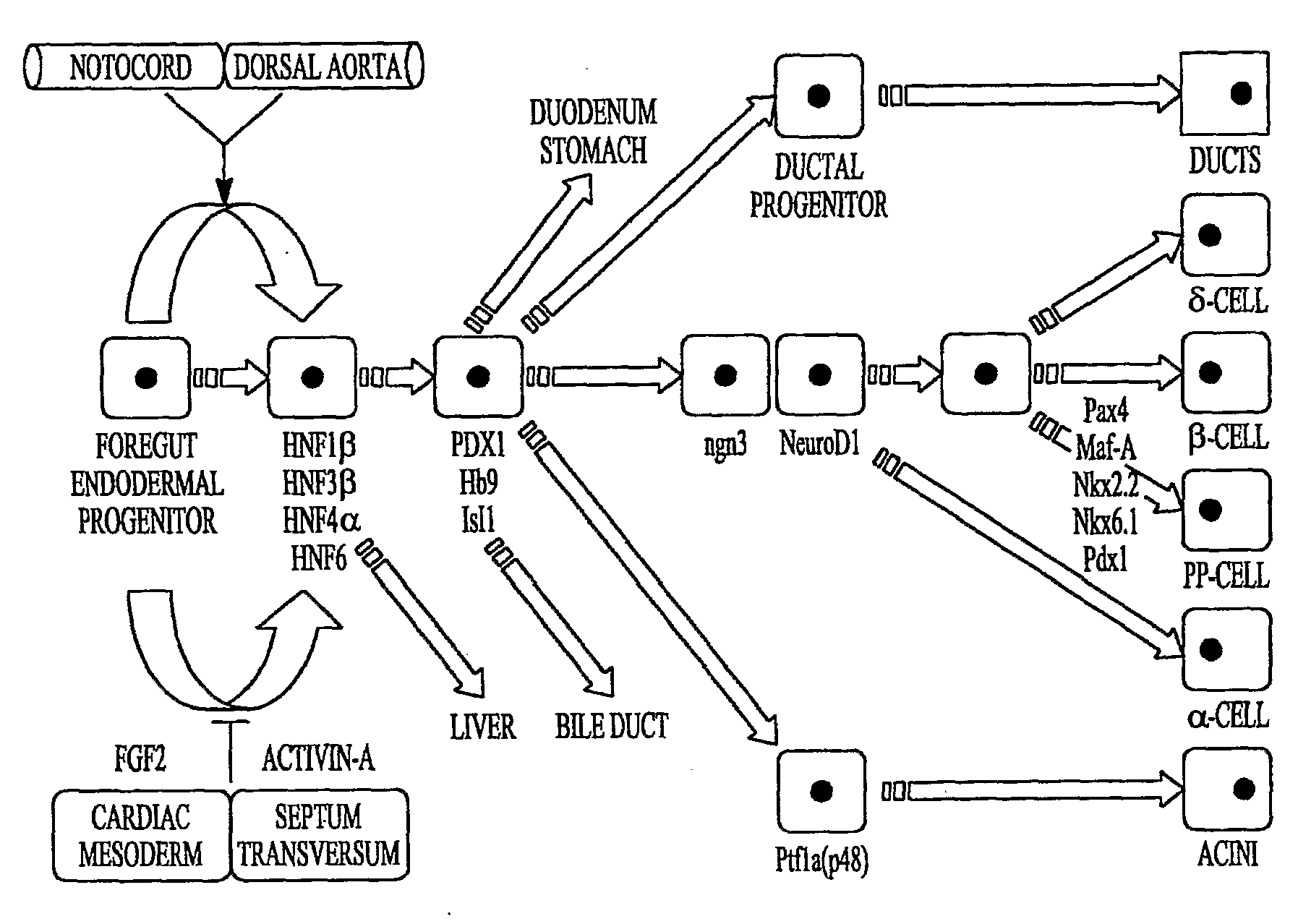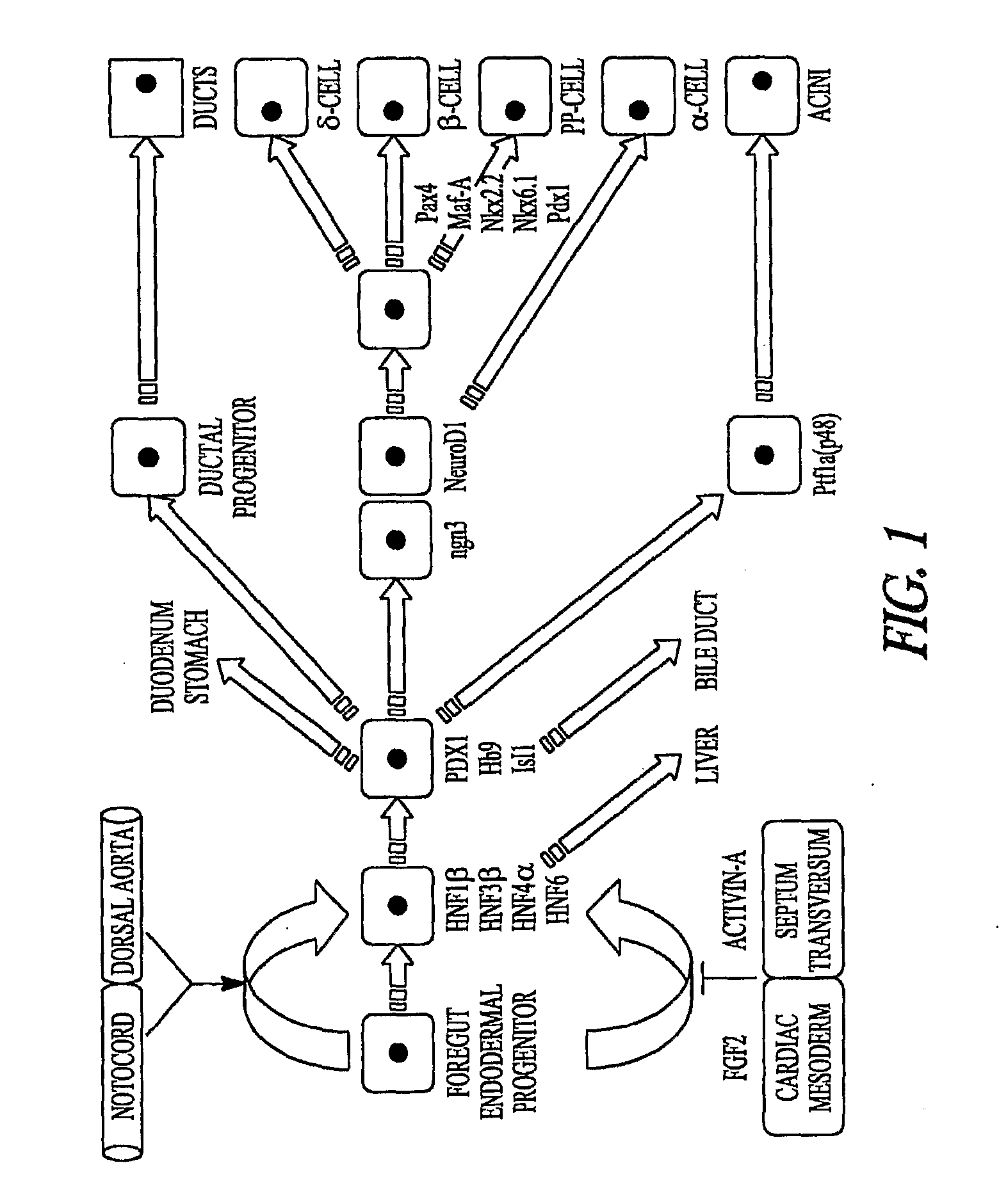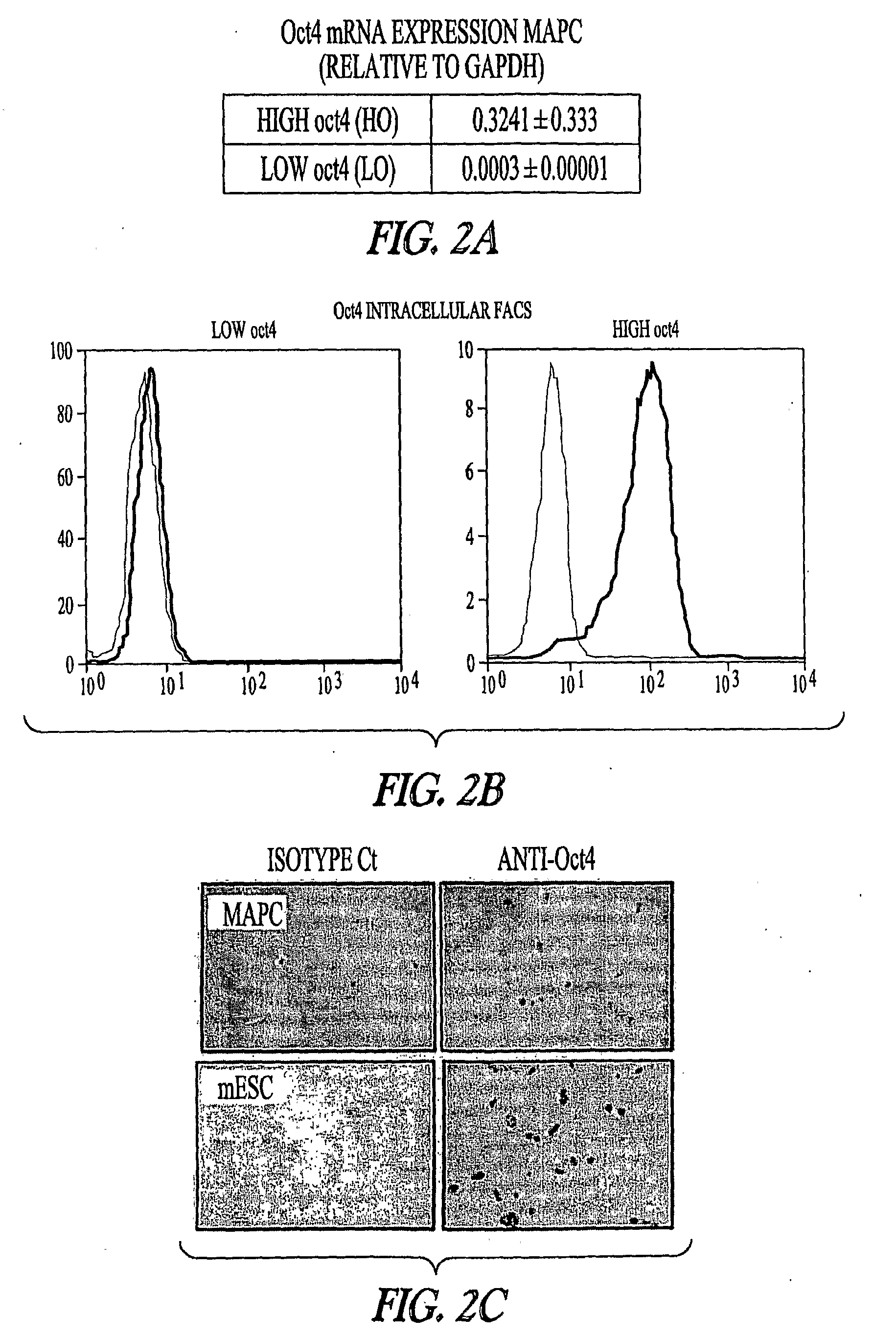Differentiation of non-embryonic stem cells to cells having a pancreatic phenotype
a non-embryonic, stem cell technology, applied in the direction of genetically modified cells, peptide/protein ingredients, metabolic disorders, etc., can solve the problems of reducing the overall life expectancy of the sufferer by one to two decades, multiple daily injections of insulin do not adequately mimic the body's, and the disease is reaching epidemic proportions, so as to increase the expression of pdx-1 and pdx-1. , the effect of increasing the expression of ngn
- Summary
- Abstract
- Description
- Claims
- Application Information
AI Technical Summary
Benefits of technology
Problems solved by technology
Method used
Image
Examples
example 1
In Vivo Differentiation of MAPCs to β-Cells
[0184]Murine MAPC cell lines were established from eGFP transgenic C57B1 / 6 Thy1.1 mice bone marrow cells as described in Jiang, Y. et al. (2002). MAPCs were cultured in 60% DMEM-LG (Gibco BRL), 40% MCDB-201 (Sigma) with 1×SITE (Sigma), 1× lenolenic acid-bovine serum albumin (LA-BSA) (Sigma), 0.1 mM ascorbic acid 2-phosphate (Sigma), 1× Chemically Defined Lipid Concentrate (Gibco), 0.05 μM Dexamethasone, 0.1 mM beta-mercaptoethanol (Sigma), 100 U penicillin (Gibco), 1000 U streptomycin (Gibco), 1000 U / mL LIF (Chemicon), 10 ng / mL mEGF (Sigma), 10 ng / mL hPDGF-BB (R&D systems), 2% fetal calf serum (FCS) (Hyclone Laboratories) on human 10 ng / cm2 fibronectin (Sigma)-coated dish (Nunc) at about 5% CO2 and about 5% O2. Plating cell density was about 100 cells / cm2 and cells were split every two days.
[0185]About 0.03-1×106 5% O2 cultured eGFP C57B1 / 6 low-O2 MAPCs were transplanted via tail vein injection in 6-8 week old NOD-SCID mice (n=28) following...
example 2
In Vitro Differentiation of Rodent MAPCs to
β-Cell Progenitors and β-Cells
Commitment of MAPCs Towards an Endocrine Pancreas Lineage
[0193]Using low-O2, high Oct-4 (FIG. 2; in one embodiment, high Oct-4 is about 5 to about 25% of that found in rat embryonic stem cell or universal mRNA, while low Oct-4 is generally about 4 orders of magnitude less) expressing mouse MAPCs and rat MAPCs (isolated and cultured as described herein), it was determined that transcription factors known to play a role in endoderm→pancreas→endocrine pancreas→β-cell commitment and differentiation can be activated in the correct sequence yielding a final cell population that expresses insulin-1 mRNA. For example, MAPCs were induced to express the transcriptional program of β-cells, with sequential expression of the transcription factors (TFs) Hnf3β, Hnf6, Pdx-1, Ngn3, NeuroD1, Pax4, Nkx61, as wells as insulin-1, insulin-2, glucagon and somatostatin mRNA when cultured with Activin-A and BMP4 d0-9, anti-SHH d3-d9, E...
PUM
| Property | Measurement | Unit |
|---|---|---|
| Volume | aaaaa | aaaaa |
| Volume | aaaaa | aaaaa |
| Volume | aaaaa | aaaaa |
Abstract
Description
Claims
Application Information
 Login to View More
Login to View More - R&D
- Intellectual Property
- Life Sciences
- Materials
- Tech Scout
- Unparalleled Data Quality
- Higher Quality Content
- 60% Fewer Hallucinations
Browse by: Latest US Patents, China's latest patents, Technical Efficacy Thesaurus, Application Domain, Technology Topic, Popular Technical Reports.
© 2025 PatSnap. All rights reserved.Legal|Privacy policy|Modern Slavery Act Transparency Statement|Sitemap|About US| Contact US: help@patsnap.com



